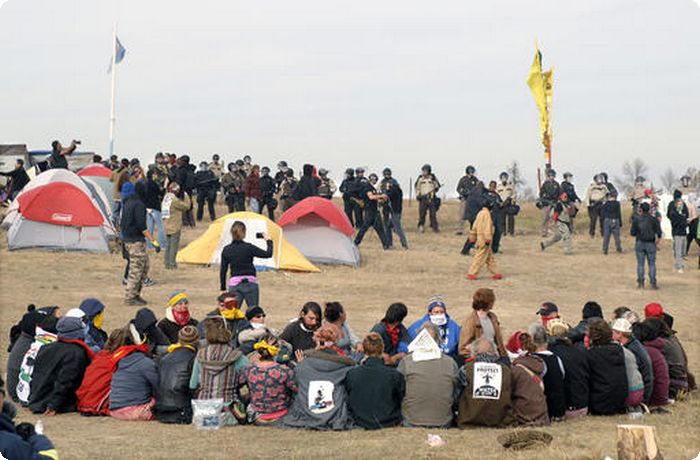Facebook is widely used by millions of people across the world, including many students, faculty members and staff. This means that viral movements and memes can spread quickly and easily. That’s exactly what happened with the “check in’” trend for Standing Rock.
Many people, especially Native Americans on the Standing Rock reservation, are protesting against the Dakota Access Pipeline project. The project is a $3.7 billion project that is creating between 8,000 and 12,000 jobs during construction. The purpose of the pipeline is to transport crude oil from North Dakota to Illinois via South Dakota and Iowa, a route that is approximately 1,172 miles long, which is leading to concerns from the locals about the pipeline polluting water sources. The project is also routed through a Native American sacred burial ground, which the Native Americans are protesting, along with voicing their concerns for the water supply.
As the situation between the Standing Rock Sioux Tribe and the Dakota Access Pipeline escalates, people across the country are trying to help. Most recently, a movement took over Facebook. Users everywhere checked in to Standing Rock in order to confuse police forces who were accused of checking to identify and track protesters within the post circulating on Facebook. No one seems to know how exactly the post started spreading, making it more along the lines of a meme or internet trend. One website notorious for breaking down whether articles are factual or not, Snopes.com, tried to figure out who and what was the start of this viral trend with no success. In just a few days, hundreds of thousands people had checked into Standing Rock reservation.
The post started with a paragraph saying that “The Morton County Sherriff’s Department has been using Facebook check-ins to find out who is at [Standing Rock] in order to target them in attempts to disrupt the prayer camps. So, Water Protectors are calling on EVERYONE to check in at Standing Rock, ND to overwhelm and confuse them.”
Facebook is one of three (the others being Twitter and Instagram) websites that allows Geofeedia access. Geofeedia is a company that surveils social media during protests in order to help law enforcement gain information. The American Civil Liberties Union reports show that Facebook cut off Geofeedia’s access in September. The ACLU also has no reports on law enforcement using Geofeedia in the case of the DAPL protest. However, law enforcement could still access public information on social media. Law enforcement associated with the protest have posted on their Facebook page saying “In response to the latest rumor / false claim circulating on social media we have the following response: The Morton County Sheriff’s Department is not and does not follow Facebook check-ins for the protest camp or any location. This claim / rumor is absolutely false”. Despite this, many still chose to check in to Standing Rock on Facebook.
The trend has since slowed down. The trend did, however, spark more interest in the subject and created new supporters on both sides of the protest as well as raise awareness of the protesting and the DAPL project. There is no concrete proof on whether the Facebook users that opted to check in to Standing Rock actually confused the law enforcement, although many Facebook users are now more aware of the situation in Standing Rock.


